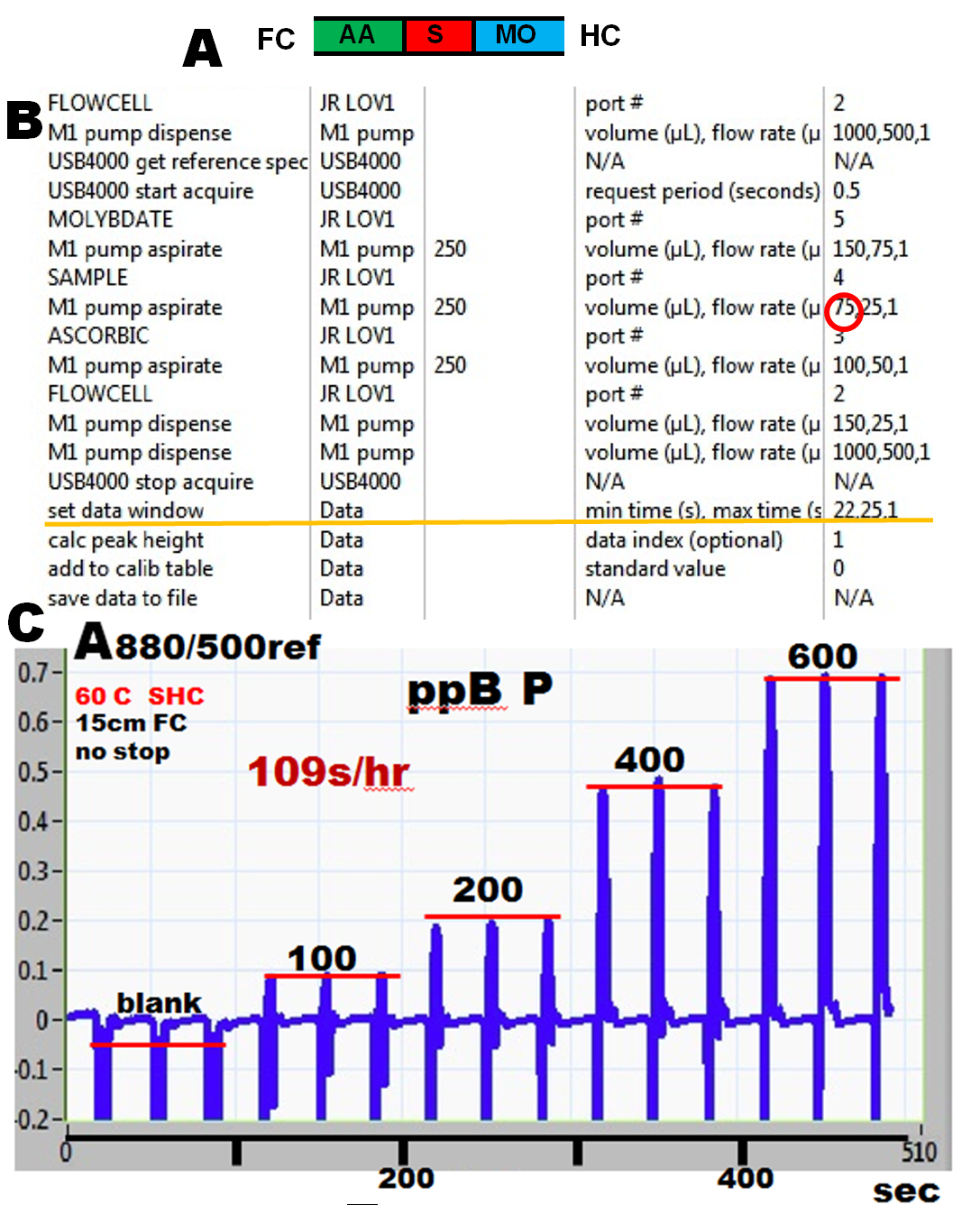Sample and reagents were sequenced in the holding coil in the sandwich configuration (A) using the software protocol that did not include the stop flow period (B). The flow cell had 15cm long light path and the holding coil was thermostated at 60 C.
The sampling frequency of the serial assay was 109s/hr (C) that is lower than 124s/hr, corresponding to 29 seconds length of the duration of the sampling cycle (D). This is because data collection and evaluation causes a delay between individual cycles (see also 2.2.18.).
The calibration graph (E), nonlinear past 400ppB can be extended up to 800 ppB by decreasing sample volume from 75 to 50 microliters. Further extension up to 1200 ppB P can be achieved by splitting the sample zone (2.2.30.) . For higher sensitivity and lower LOD the SFC method should be used (2.2.26.)
When using DI water as a carrier the reagent solutions (3% ascorbic acid and 0.5% ammonium molybdate in 0.75 M sulfuric acid,) cause a change of baseline absorbance in front and at the end of the peak. Programming the data collection window (22 to 25 seconds) eliminates the influence of these baseline changes, caused by refractive index. By injecting sample into reagent sequence assembled in the holding coil, the initial drop of baseline can be eliminated (2.2.27.), but if the injected sample causes baseline to drop (e.g. when analyzing sea water 2.2.28.) the use of data collection window is a recommended.
Phosphate Assay by SHC
2.2.25.











